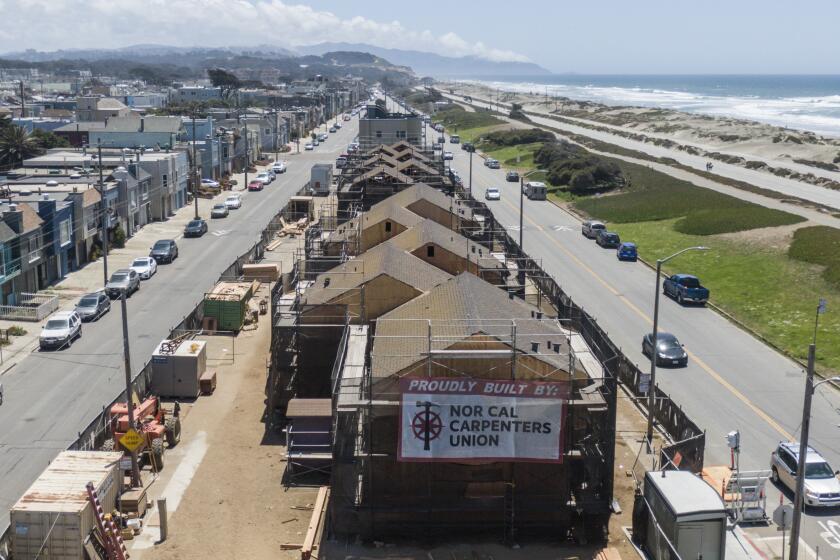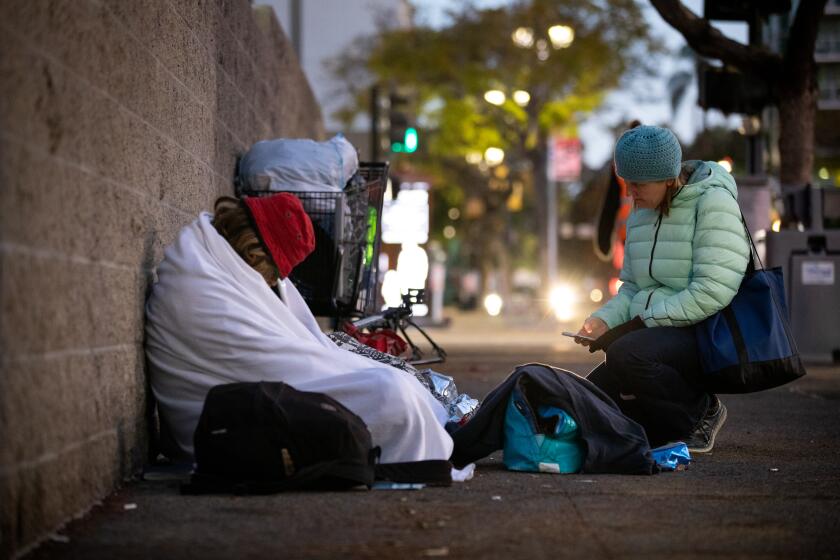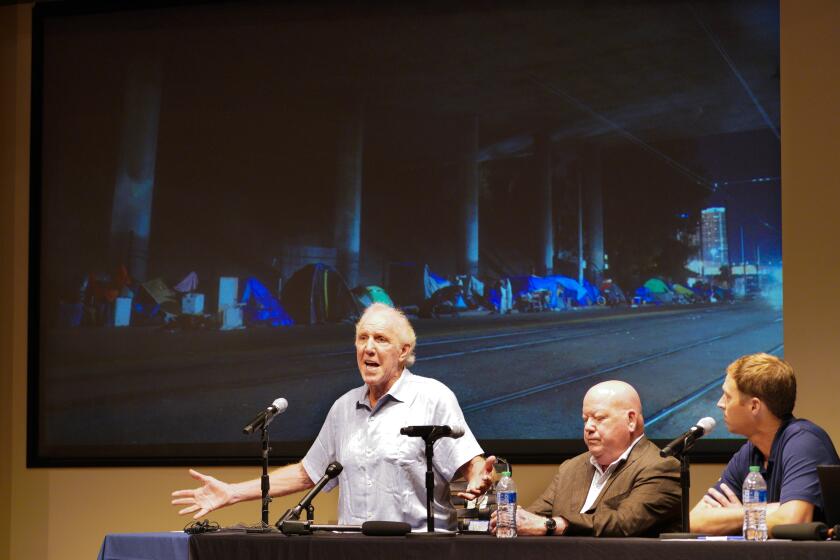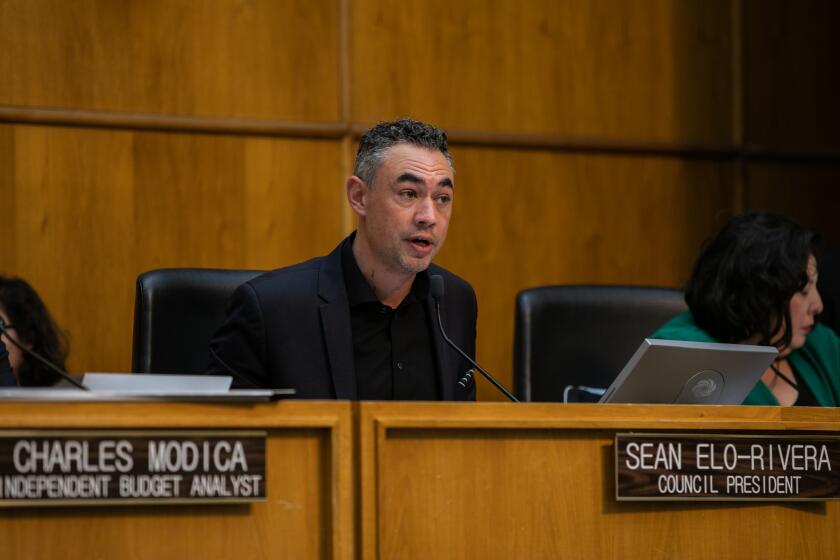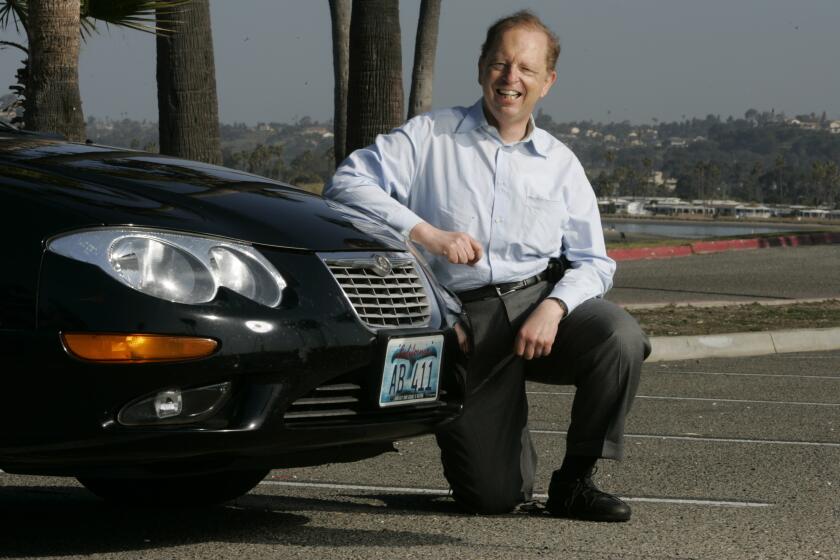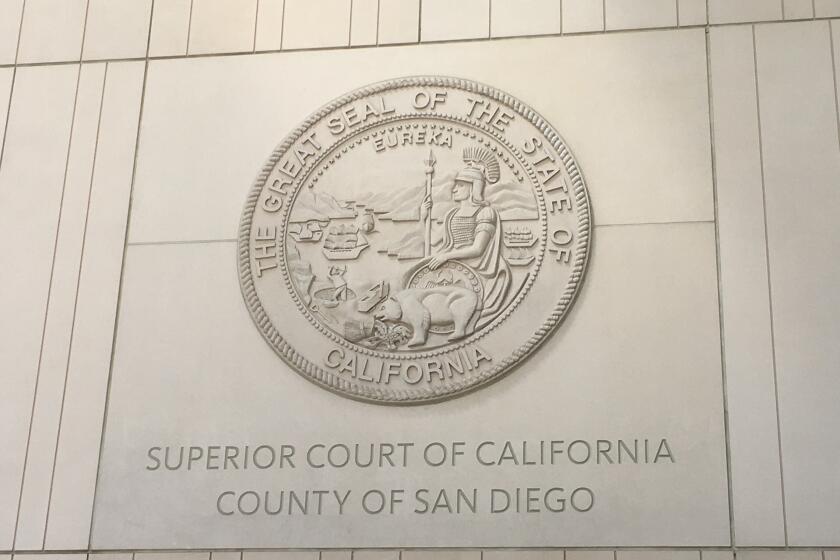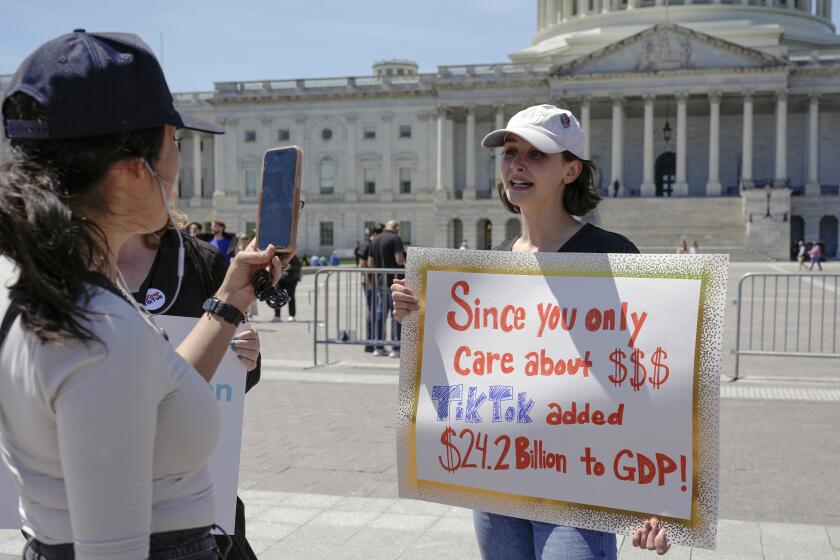Housing crisis prompts first joint San Diego county-city meeting in decades
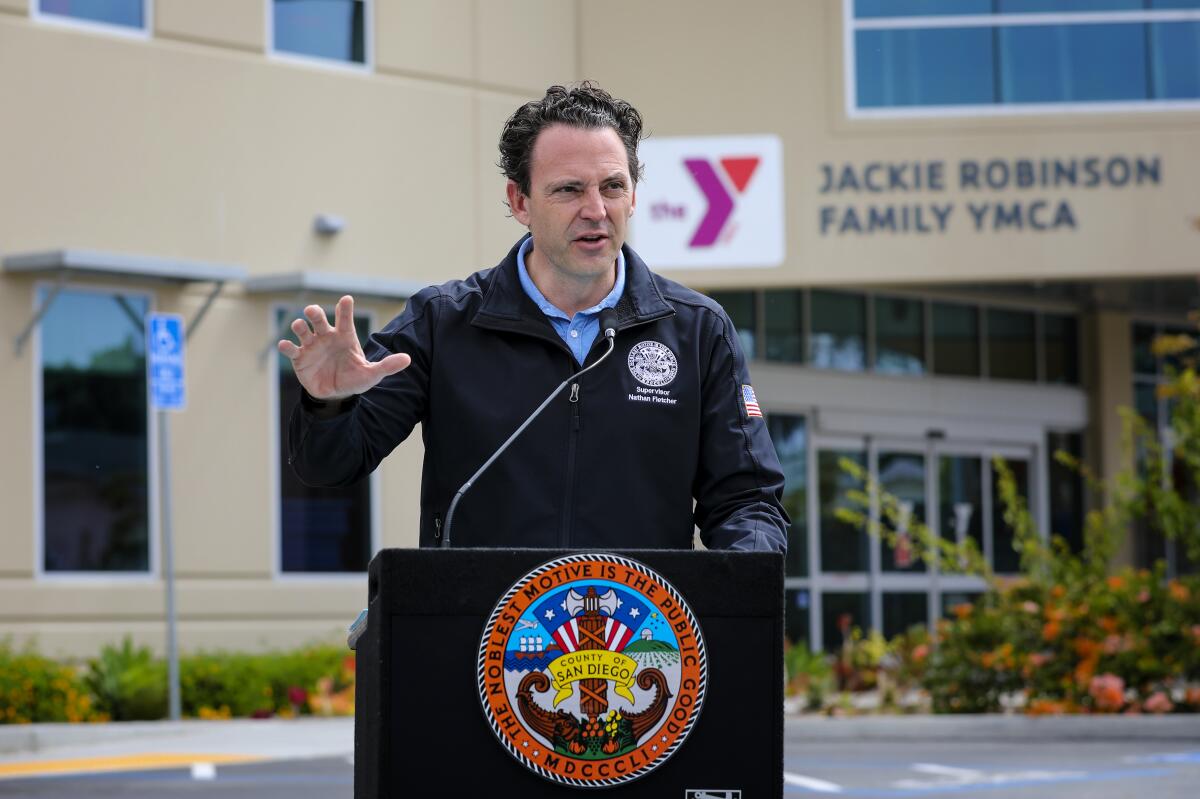
Goal is new era of cooperation; agencies aim for 10,000 subsidized units built on government land
The region’s housing crisis is prompting San Diego city and county elected officials to hold an unusual joint meeting Monday to spur construction of 10,000 subsidized housing units on public land by 2030.
Get our essential investigative journalism
Sign up for the weekly Watchdog newsletter for investigations, data journalism and more.
You may occasionally receive promotional content from the San Diego Union-Tribune.
The move comes after years of friction and lack of cooperation between the county and the city on a variety of issues, most notably the Hepatitis A health crisis five years ago.
The joint panel will take the kind of leadership role typically expected of the San Diego Association of Governments, a regional agency that also includes officials from the county and all 18 local cities.
It will be the first time in more than 22 years that the San Diego City Council and the San Diego County Board of Supervisors have held a joint meeting, and only the second such meeting in nearly 32 years.
Leaders said Wednesday that such a meeting is necessary because of the severity of the housing crisis and its impact on the economy, homelessness, social equity and general quality of life.
California lawmakers struck a seemingly impossible deal to build more housing in areas traditionally zoned for big box stores and office buildings
The two largest government agencies in the region must come together to set an example of cooperation and leadership on building more affordable housing, said council President Sean Elo-Rivera and board Chair Nathan Fletcher.
The San Diego Association of Governments, or SANDAG, has been mentioned in recent years as a potential leader on cooperative housing efforts. But Fletcher and Elo-Rivera said a county-city panel is a better bet.
“What makes this especially important is some of the dysfunction we see at SANDAG,” Elo-Rivera said. “I sit on the board, and it’s the opposite of collaboration at many times. There are obstructionists who are trying to prevent actions from being taken.”
Elo-Rivera was referring to battles within SANDAG over funding, ballot measures, housing goals, possibly charging drivers fees to use roads and how to connect San Diego International Airport to transit.
Several cities have resisted state-mandated housing goals, with Coronado, Solana Beach, Imperial Beach and Lemon Grove unsuccessfully appealing the mandates to the state Supreme Court.
California Supreme Court declines to hear housing lawsuit brought by four cities in San Diego region, upholding lower court rulings
Fletcher and Elo-Rivera said their joint meeting, which will be held on neutral territory at San Diego State University, is also an opportunity to help reverse years of friction, mistrust and limited cooperation between county and city officials.
They said a stark example would be finger-pointing instead of cooperation during the early stages of the hepatitis A crisis in 2017.
“I would say this is the exact opposite response to a critical community need,” Elo-Rivera said.
“The history of the city and the county is not one of collaboration,” Fletcher said. “Imagine if the city and the county had had a joint meeting on hep A, instead of opposing press conferences blasting each other.”
The 10,000 subsidized housing units county and city officials want built would make a dent in the 172,000 overall units San Diego County government agencies must build by 2030 to meet state goals.
San Diego declares homelessness a public health crisis. ‘Today, our county takes a significant step’
Supervisors also approved a rent subsidy program to help seniors avoid homelessness
Because virtually all the 10,000 units are expected to be for low-income residents, the pledged units would make a much larger impact on the 69,000 low-income units the region must build by 2030 to meet state goals — 42,000 units for very low-income residents and 27,000 for low-income residents.
The city and the county aren’t pledging to have all 10,000 units be on county and city land. Subsidized units built on any public land, whether that of a school district or a smaller city, would count toward the goal. So would 3,000 units that have already been built or begun construction on government land.
Building housing on underused government land eliminates the No. 1 driver of housing costs — the expense of buying scarce land in San Diego County, Fletcher said.
“This fits with the notion of using publicly owned land for the highest need, because the highest need right now is affordable housing,” he said of the joint county-city pledge.
While the joint meeting is clearly symbolic in some ways, Fletcher said it will also be substantive.
Criticism comes as Lucky Duck Foundation announces Shamrocks and Shipwrecks initiative to hold officials accountable
“So many issues we face are a little bit city and a little bit county, and there is a need for all of us to come together,” he said. “We thought it would be good symbolically to have a joint meeting. We also thought substantively it would be good to have us align around a goal and an issue.”
Elo-Rivera said the meeting will be much more than symbolic.
“Having the council and the Board of Supervisors in the same space at the same time hearing from one another, committing to each other and the public together, I think that’s more than just ceremonial,” he said. “When we do it together, I think there is a shared ownership.”
Of the 3,000 subsidized units already built on government land or in the pipeline, Fletcher said about 1,000 are on county land and 2,000 are on land controlled by the Metropolitan Transit System.
Fletcher said 10,000 units on government land by 2030 is a lofty goal.
“We set real goals, and they’re ambitious, and we may not get there,” said Fletcher, contending that setting ambitious goals boosts productivity by concentrating thought and effort.
The joint meeting, scheduled to begin at 9 a.m. in SDSU’s Montezuma Hall, will include presentations on the San Diego Housing Commission’s plans for more densely-built projects on land it controls and how the lack of affordable housing affects the economy and homelessness.
The nonprofit San Diego Foundation will summarize a mapping tool it created to evaluate all government-owned land in the region for possible housing projects. The foundation is also providing $10 million for subsidized housing projects on government-owned land.
Fletcher and Elo-Rivera said the idea for the meeting evolved out of discussions they had had after meetings of the MTS board, where they both serve as panelists.
“We kicked around different ideas about what it would be,” said Fletcher, noting that he had no idea it had been 22 years. “I didn’t know they had ever done one. I wasn’t around when Susan Golding was mayor.”
Fletcher is referring to the last county-city joint meeting in April 2000, where Mayor Susan Golding and Board Chair Dianne Jacob presided over a discussion about homelessness. The last joint meeting before that was in November 1990 and focused on illegal drugs.
Joint meetings had been more common in prior decades. County records show there were four joint meetings in the 1980s and six in the 1970s.
Fletcher said the lack of meetings in recent years is a reflection of friction and lack of cooperation.
“The relationship between the county and the city has not been in the best interest of the people of San Diego,” he said. “Us doing this sends a powerful message that we’re going to align and we’re going to work together and we’re going to figure out how to do things.”
Get Essential San Diego, weekday mornings
Get top headlines from the Union-Tribune in your inbox weekday mornings, including top news, local, sports, business, entertainment and opinion.
You may occasionally receive promotional content from the San Diego Union-Tribune.
